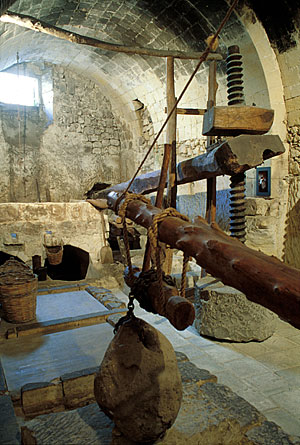
The museum is a private structure, founded and raised with volunteer activities and a great spirit of self-denial. Far from the museum-death equivalence, it is a museum for reproposing and re-appropriation of our culture, with educational purposes and social development.
This is attested by the many cultural initiatives, organized, in particular, in recent years, in collaboration with the Antonino Uccello House Museum of Palazzolo Acreide, the dialogue with the world of school and with some museums belonging to the Museum Network of Iblean Culture, the involvement of young people, in order to stimulate them to become aware of the economic potential that may result from the right use of cultural and environmental heritage.
It is managed by the Municipality of Buscemi and the Association for the Conservation of Popular Culture of the Hyblaean, through an agreement of partnership, following the establishment of the Civic Museum, took place in November 2007.
It includes nine museum units: the casa ro massaru, the house of the massaro, u parmientu il palmento, the putia ro firraru, the blacksmith's shop, the ro iurnataru house, the laborer's house, a putia ro quarararu, the workshop of the calderaio, a putia ro falignami, the carpenter's workshop, a putia ro scarparu and r'appaptiatti, the shop of the shoemaker and the tanker, the property in where there is the educational workshop and the following sections: wheat
cycle, working and shaping stone in the Val di Noto, folk art, tailoring and popular clothing, the Documentation Center for Hyblean People's Life and the Santa Lucia Water Mill, located in the territory of Palazzolo Acreide.
This guide has been translated automatically through a third party service. Visititaly offers these automatic translations to help site visitors, however the automatic translations may contain inaccuracies, errors or inaccuracies. You can contact us to report inaccuracies or errors and we will check the translation.